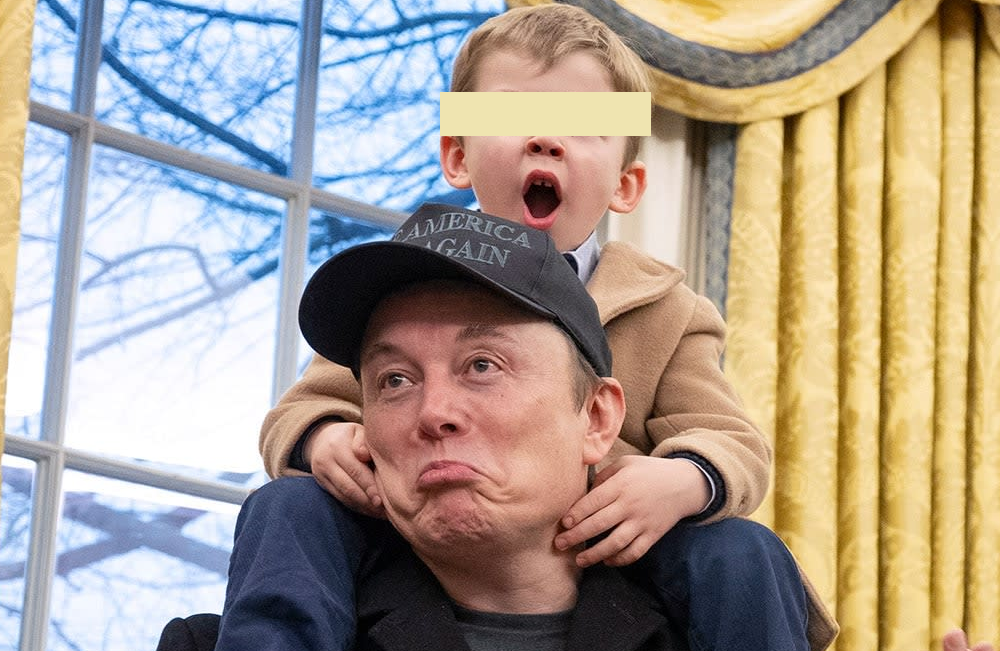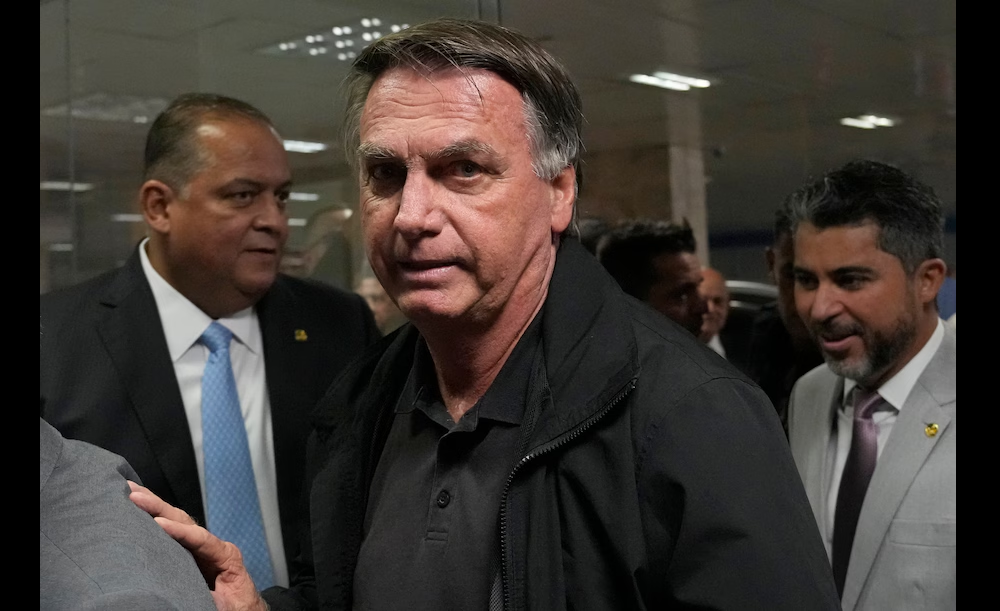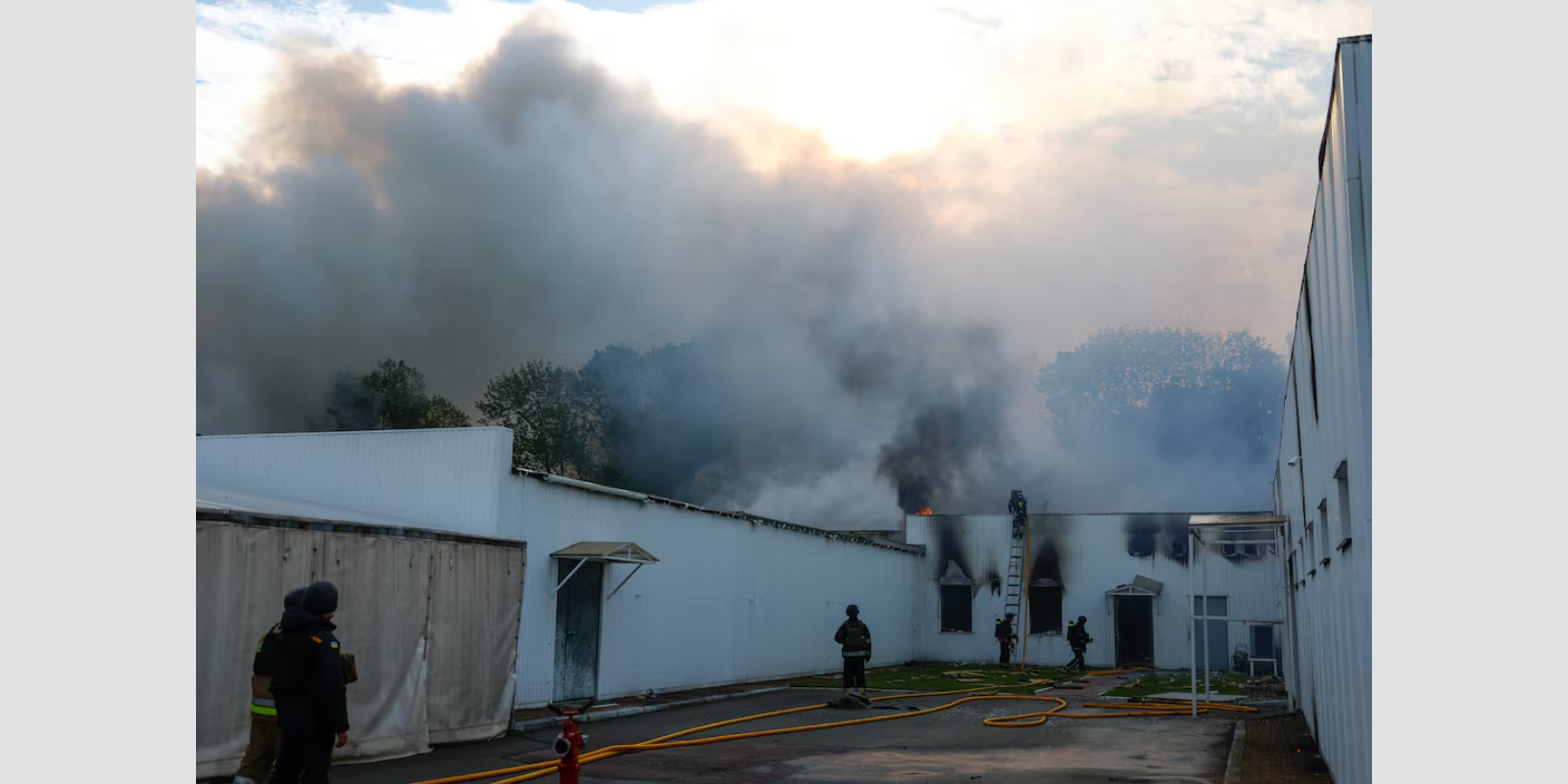The Return of the Starvation Weapon
The Collapse of Global Norms Fueling the Catastrophes in Gaza and Sudan
Alex de Waal October 3, 2025 Global affairs
Famines under any circumstance have been comparatively rare since the late twentieth century. In recent decades, bigger and more skilled relief agencies and better early-warning systems have made it much easier to address hunger crises before they reach catastrophe. By the 2010s, an international consensus also seemed to have emerged against the starvation weapon. In 2018, the UN Security Council unanimously adopted Resolution 2417—which formally highlighted the link between armed conflict and hunger and condemned depriving civilians of food as a method of warfare. At the time, China, Russia, and the United States each preferred to denounce some regimes while being more lenient toward others. But they all voted for the principle that intentionally starving civilians was a war crime.
Just seven years later, that looks like a long-lost era, and not only because of the disastrous wars in Gaza and Sudan. In conflicts around the world, including in Ethiopia, Myanmar, and Ukraine, military forces and their backers have once again been weaponizing hunger. Yet leading global powers, distracted by volatile geopolitical shifts, new rivalries, and economic challenges at home, have done little to stop them. Meanwhile, the humanitarian-aid budgets of many wealthy countries have been drastically cut. The result is that more and more, belligerents can inflict mass starvation on vulnerable people with impunity.
HUNGERING THEM OUT
Withholding access to food is among the oldest weapons of war. In the twentieth century alone, it was used by all sides in both world wars, by colonial powers such as the French in Algeria and the British in Malaya, and by governments fighting separatists such as Nigeria in the 1960s and Ethiopia in the 1980s. In Sudan, successive regimes have for decades resorted to starvation campaigns to achieve military aims. In 1988, near the frontline of a previous civil war between the government and southern rebels, I witnessed unchecked starvation, with civilians dying at a rate almost 50 times the IPC famine threshold. The Sudanese brigadier in charge of that sector made no pretense about the government’s aim: “We’re hungering out the rebels,” he said. As the officer well knew, the men with the guns are always the last to go hungry—so his forces were creating a famine and emptying the land of civilians, at which point the insurgents would have to either surrender or starve.
The horrors of that war were a catalyst for change. The next year, under U.S. pressure, Khartoum allowed the UN to set up Operation Lifeline Sudan, the first time the UN crossed the battle lines to aid civilians in a rebel zone. It had an immediate impact. (Khartoum’s generals later complained that the intervention cost them victory and ultimately led to the secession of South Sudan.) Over the following decades, data on hunger crises also improved. During the 2010s, when manmade famines loomed in northern Nigeria, Somalia, South Sudan, and Yemen, FEWS NET and the IPC—which had been set up in the 1980s and the early 2000s, respectively—allowed the world to track the progressive effects in real time, in color-coded maps. Humanitarians now had a blueprint for how to monitor and prevent starvation; they just needed high-level political backing to sweep away the roadblocks, open aid corridors, and demand cease-fires.
The UN spoke softly about Russia’s starvation tactics in Mariupol.
With the UN Security Council’s passage of Resolution 2417, it looked like that resolve had finally crystallized. At the time, U.S. Ambassador to the UN Nikki Haley spoke passionately against the hunger weapon, singling out the Syrian regime of Bashar al-Assad, which had freely used starvation sieges in Syria’s civil war. She refrained from publicly condemning Saudi Arabia and the United Arab Emirates for their blockade of Yemen, but U.S. officials worked quietly—and effectively—to ensure that aid was delivered. For the first time, both the United States and its global rivals appeared to be united in the determination to make starvation a war crime.
But that moment was short-lived. After Russia’s 2022 invasion of Ukraine and blockade of Ukraine’s grain exports, international attention shifted to securing global food supplies. To get Russian President Vladimir Putin to consent to the UN’s Black Sea Grain Initiative, which aimed to allow Ukraine to safely export food, the UN had to speak softly about Moscow’s own use of starvation against Ukrainians, including the Russian army’s 85-day siege of the city of Mariupol. By this point, Ethiopia had already begun a war of starvation against the rebellious region of Tigray. When the IPC predicted famine, Addis Ababa simply responded by dismantling the country’s IPC working group, which, as the host government, it chaired. Famine denialism—keeping out journalists and suppressing humanitarian data—proved effective, and others have since followed that playbook. Tigray was a key test of Resolution 2417, but in the end, the Biden administration wasn’t ready to press for tough measures at the UN Security Council when Ethiopia failed to end the blockade. By 2023, the year the current wars in Sudan and Gaza started, starvation tactics were already making a comeback.
MUTUALLY ASSURED STARVATION
Sudan is today’s biggest and most intractable famine. Amid the vicious two-and-a-half-year civil war between the Sudanese Armed Forces (SAF) led by General Abdel Fattah al-Burhan and the Rapid Support Forces (RSF), a ruthless paramilitary organization led by General Mohamed Hamdan Dagolo, known as Hemedti, the numbers of hungry, destitute, and displaced are mounting every day. Because the warring parties restrict aid operations and many parts of the country are difficult to access, data is poor. But there’s no doubt that millions of civilians face truly desperate conditions, and even by conservative estimates, tens of thousands of them, most of them children, have already perished.
This tragedy is a direct result of actions taken by the warring parties on a population that is especially vulnerable to food weaponization. Before the current war began, more than two million people in Darfur were already living in camps and relied on World Food Program rations—more than half of which was funded by USAID. In the Nuba Mountains in the south of the country, there was an ongoing food emergency. Sudan’s urban dwellers were hungry, too: the Sudanese economy had all but collapsed, in part because of the loss of oil revenues following the independence of South Sudan, where most of the oil was located. In this precarious situation, RSF forces have systematically pillaged towns and villages and laid siege to El Fasher, the last SAF stronghold in Darfur, for more than 500 days. Trapped inside are some 250,000 people who are cut off from food.
In turn, Burhan has exploited his status as the head of the UN-recognized government to restrict the flow of aid into Darfur and other RSF-controlled areas. Meanwhile, in the Nuba Mountains, a three-sided war is unfolding—between the RSF, SAF, and the Sudan People’s Liberation Army-North, which draws its support from the Nuba people, non-Arab farming communities who have long resisted the Arab-Muslim domination of the Sudanese state. Although the SPLA-N and RSF recently signed a political pact, people in encircled towns and ravaged villages continue to starve.
Without immediate intervention, it is almost certain that tens of thousands of Sudanese will die of hunger in the coming months. Yet this catastrophic situation has failed to trigger international action. This year, the UN scaled back its emergency appeal for Sudan, aiming to reach just two-thirds of the 30.9 million people in need. Even so, as of September, that bare-bones goal is barely 25 percent funded. Until January this year, USAID supported 1,400 community kitchens across Sudan, which were run by a network of local volunteers and were considered highly effective. But with the Trump administration’s gutting of USAID, 900 of the kitchens have been forced to closed.
Meanwhile, the United Kingdom and the European Union, once aid superpowers, are tightening their purse strings, and wealthy Arab states, which have been meddling on both sides of the civil war, aren’t footing the bill. Even the UN Security Council has been unable to muster a strong response. In June 2024, the council passed, with Russia abstaining, a resolution ordering the RSF to allow aid into El Fasher. But in November, Moscow vetoed a second, more forceful resolution, saying it infringed on Sudanese sovereignty—a sign of how impunity has become the norm.
In mid-September, U.S. Secretary of State Marco Rubio, together with his counterparts in Egypt, Saudi Arabia, and the United Arab Emirates—collectively the Quad—announced a cease-fire plan that requires the two sides to immediately allow in humanitarian aid. It’s the right plan, and hopefully the other Quad members will set aside their differences and press the generals to implement it. But that’s only the first step. To actually stop the crisis, an international aid campaign must not only purchase and ship food and medicine to Sudan but also ensure that they are delivered to where they are most needed, a process that involves relief convoys traversing vast distances on poor roads with numerous roadblocks where local commanders run extortion rackets. For those already sucked into the vortex of famine, this slow timeline could be a death sentence.
MILITARIZED HUMANITARIANISM?
If Sudan is the world’s worst manmade hunger crisis, Gaza has become its most visible. For months, images of starving children and crowds of desperate people risking life and limb in a struggle for food have shocked the international public. In their August reports, the IPC and FEWS NET added hard data and expert judgment to those images. Even before Israel’s ground invasion of Gaza City began, conditions were dire for the nearly one million people remaining there. Fully 30 percent of them—more than the “famine” threshold of 20 percent—had no access to food at all.
Because of extremely limited access, the IPC was unable to obtain its preferred metric for malnutrition—surveys of weight-to-height ratios of children under five. But using its second-best measure, surveying children’s mid-upper-arm circumference, it found a sixfold increase in malnutrition between early June and later July—the kind of exponential spike that occurs when a population is spiraling into famine. By August, reported deaths from starvation were also mounting, and the IPC inferred, in line with its data from previous crises, that these numbers are a small fraction of the overall hunger toll, with many more perishing from the ravages of disease on malnourished bodies and low rates of survival after surgery because wounds need nutrition to heal.
Beyond pointing out that the famine is manmade, neither the IPC nor FEWS NET allocates blame. But the causes have been plain for the world to see. In early March, Israel began a total blockade of Gaza and did not allow food into the territory for 11 weeks. And when Israel, under enormous pressure, finally allowed some aid to resume, it insisted that aid would henceforth be distributed not by the UN and long-established humanitarian nongovernmental organizations, but by a new entity, the Gaza Humanitarian Foundation, under the supervision of the Israel Defense Forces.
The switch of aid delivery to the inexperienced GHF, at precisely the moment when Gaza’s population was plunging into famine, was disastrous. Instead of the 400 or so centers run by the UN and its partners, the GHF has just four locations, three of them in the far south and one in the center of Gaza—and none at all in Gaza City or the north. As has been widely reported, aid distribution from these sites has been plagued by violence, with more than 1,000 people shot and killed by IDF soldiers and private security contractors. The GHF cannot say who has eaten, sold, or hoarded the food boxes it is distributing. Quite possibly, substantial amounts have been grabbed by various criminal gangs or by Hamas itself—another count of GHF’s lethal incompetence.
Israeli President Benjamin Netanyahu has tried to dismiss the pictures of starving children as “fake” and claimed falsely that the IPC has lowered its thresholds for famine. The IPC has responded with detailed technical explanations of its methods, in line with its well-established protocols. (Notably, Israel was quiet about what transpired last May, when FEWS NET reported that northern Gaza was in famine, and the IPC adjudged that the evidence didn’t yet warrant the finding.) If Israel wanted to clear its name, it could permit better humanitarian data gathering—and indeed, allow international journalists to enter Gaza. But it has not. Aid practitioners know what’s needed to reverse the Gaza famine, and because the area is small and accessible, they could make it happen very quickly. But in order to do so, external powers, and particularly the United States, must force Israel to allow the UN and humanitarian agencies to do their job, unhindered and at scale.
Essential aid should not be contingent on a cease fire.
The United States has the power to turn this crisis around. In March 2024, the Biden administration pressured Israel to allow in more aid, and the crisis was briefly ameliorated. In January 2025, the incoming Trump administration insisted on a cease-fire, and Israel concurred. In early August, responding to international outrage, Israel allowed more food in, and the exponential increase in malnutrition rates charted by the IPC flattened. And now, U.S. President Donald Trump’s 20-point plan for Gaza promises “full aid” to begin through the UN and humanitarian agencies when Israel and Hamas accept the agreement. That could end starvation quickly. In the meantime, if Netanyahu’s Operation Gideon’s Chariots II forces the evacuation of Gaza City, that will mean the closure of 11 of Gaza’s 18 remaining hospitals and make it impossible to save the most malnourished children. Every day counts.
For aid workers, the urgency of needs has created a larger dilemma. With few other options, senior UN officials reluctantly began talking with the GHF, exploring whether collaboration might be possible. Established humanitarians condemned this, arguing that the GHF doesn’t adhere to core humanitarian principles of humanity, impartiality, neutrality, and independence. To a degree, these shortcomings should not be disqualifying: after all, an occupying power—such as Israel in Gaza—has legal obligations to provide aid, but it clearly isn’t neutral or independent.
But ending mass starvation requires more than handing out boxes of food. It also must reverse the dehumanizing effects. In such a crisis, people are so gripped by hunger that they may transgress social norms—scavenging in garbage heaps, eating animal fodder, and stealing food or hiding it from their neighbors. Survivors often remember famines as when they lived like animals and may be scarred by shame and humiliation. Thus far, the GHF has failed the test of humanity because it fails to treat Palestinians as dignified human beings. The foundation’s basic rations might keep people alive but destroy their dignity in doing so.
DISARMING THE WEAPON
Today’s surge in starvation crimes may portend even worse in the future. Observing the lack of accountability in Tigray, Mariupol, El Fasher, and now Gaza City, autocrats and warlords in any of a dozen of the world’s hot spots may well seize the chance to employ this terrible weapon. Danger spots include a looming new war between Ethiopia and Eritrea, escalating conflicts in the West African Sahel, Myanmar’s ongoing campaign to destroy the country’s Rohingya minority, and Venezuela’s relentless food crisis.
Paradoxically, this trend is occurring even as international bodies have finally begun to condemn weaponized starvation. Eighteen months ago, in the case brought by South Africa against Israel, the International Court of Justice ruled that Israel should immediately provide a full spectrum of humanitarian relief and essential services, at scale and unhindered. Aharon Barak, the Israeli judge nominated to sit on the court, voted for the measure, making it unanimous. Israel hasn’t complied, a failing that increases the risk that the ICJ will in due course find that the Israeli government hasn’t met its duty to prevent genocide. In November 2024, the International Criminal Court for the first time cited starvation crimes in announcing international arrest warrants against Netanyahu and former Israeli Defense Minister Yoav Gallant, giving a high profile to the issue. On Sudan, UN Security Council Resolution 2736, of June 2024, still stands, demanding humanitarian aid and protection of civilians in the famine zone—but has never been enforced. Failing to enforce these decisions risks making a mockery of them.
In a world with apparently insoluble problems, preventing famine is one of the easier ones. Sufficient humanitarian funding is one step—$85 billion would meet the UN’s overall target for this year. That’s tiny compared with current spending on arms or the development of artificial intelligence. And those funds won’t be needed next year if agreed measures against starvation crimes are enforced. States can legitimately fight in self-defense, but the rules of war must be obeyed. The humanitarian tent can be expanded to include new organizations, but they must be made to comply with rigorous professional standards and conform to the principle of humanity.
The global consensus against the starvation weapon took decades to achieve. Now, international apathy risks letting it collapse at the moment it is most needed. Political solutions in Sudan and between Israel and Palestine may be hard to find, but keeping people from starving is perfectly feasible. It should be something on which all can agree.








